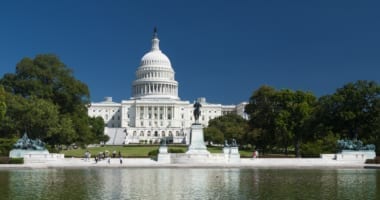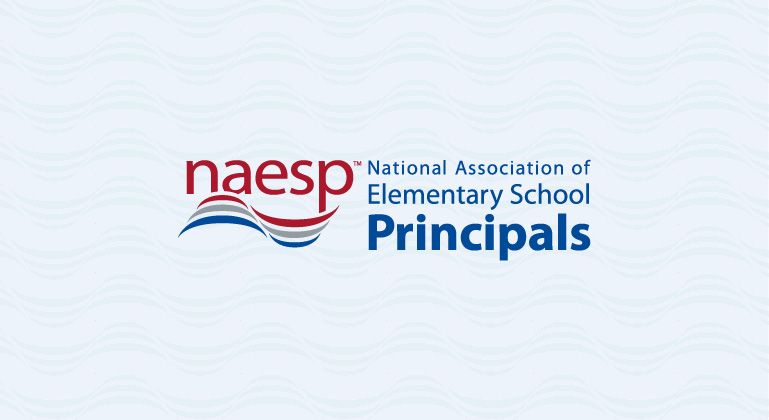Advocacy Update: Coronavirus Stimulus Package
The bill includes funding for education, providing resources to schools and districts to respond to the coronavirus pandemic.
Coronavirus Stimulus Package
On Wednesday, the Senate passed a $2 trillion coronavirus funding package designed to stabilize the U.S. economy and support individuals during the coronavirus outbreak. The House is expected to pass the legislation today. Included in the bill is significant funding for education, providing resources to schools and districts to respond to the coronavirus pandemic.
Schools and districts can use these funds for a variety of purposes, including cleaning and sterilizing schools; delivering training for staff on proper hygiene and sanitation; providing professional development for teachers and principals to improve distance learning during closures; purchasing education technology, including hardware and software; and boosting Wi-Fi accessibility for students, including adding Wi-Fi hotspots.
The bill also includes language that gives principals authority to address the individual needs of their schools during and after the coronavirus outbreak—a key priority NAESP advocated for during legislative negotiations.
The legislation creates a $30.75 billion stabilization fund that will be distributed to states based on the Title I-A formula. If the stabilization funds sound familiar, this was the mechanism used in the Recovery Act (stimulus bill) in 2009, which directed money to districts during the recession to help keep districts afloat.
Once states receive money through the stabilization funds, funding will be allotted as such:
- At least 44 percent must go to districts (approximately $13 billion);
- At least 46 percent must go to higher ed institutions based on a share of Pell Grant-receiving students (approximately $14 billion); and
- The remaining 10 percent will go to governors who can use funds to support K-12 or postsecondary (approximately $3 billion).
- The $13 billion in K-12 funds that states receive will be pushed out to districts based on a state’s Title I, Part A funding formula.
The $13 billion in K-12 funds that states receive will be pushed out to districts based on a state’s Title I, Part A funding formula.
The legislation does not include additional dedicated funding for the E-Rate program for schools to expand broadband—something NAESP and other groups pushed lawmakers to include. While education technology and Wi-Fi is an allowable use for districts and schools under the stabilization funds, education advocates pushed for separate dedicated funding to flow through the E-Rate program because of its strong track record of effectively and efficiently distributing education technology funds to districts.
NAESP Letters to Congress Regarding Education Funding in Stimulus Bill:
- Request for Education Stabilization Funds
- Follow-Up Letter Reiterating $75 Billion Ask
- Request for E-Rate Funding
- Principals’ Request for Funding
Department Of Education
Over the past week, the U.S. Department of Education has worked to clarify two key questions facing states, districts, and schools: (1) What will happen to testing requirements in the face of widespread closures? (2) How should schools handle delivering virtual instruction to students with disabilities during school closures?
State Testing Requirements
On March 20, Secretary of Education Betsy DeVos announced students impacted by school closures due to the coronavirus can bypass standardized testing for the 2019-2020 school year. States must request a waiver from the U.S. Department of Education to be approved. So far, 31 states have sought waivers.
Today, we announced turnkey waivers for states to bypass high-stakes standardized testing during the #COVID19 national emergency so they can instead focus on the immediate needs of their students and educators. pic.twitter.com/Plp4hblthR
— Secretary Betsy DeVos (@BetsyDeVosED) March 20, 2020
Providing Services to Students With Disabilities
On March 21, the U.S. Department of Education released a fact sheet in response to questions and confusion around how schools must serve children with disabilities during school closures. The letter reads in part:
As school districts nationwide take necessary steps to protect the health and safety of their students, many are moving to virtual or online education (distance instruction). Some educators, however, have been reluctant to provide any distance instruction because they believe that federal disability law presents insurmountable barriers to remote education. This is simply not true. We remind schools they should not opt to close or decline to provide distance instruction, at the expense of students, to address matters pertaining to services for students with disabilities.
The department also:
USDA: Delivering Student Meals During School Closures
On March 18, Congress passed legislation that gave the United States Department of Agriculture (USDA) authority to grant states waivers to ease restrictions on how schools provide meals during closures. Called “Congregate Meal Waivers,” they allow states to grant waivers to Summer Food Service Program and the National School Lunch Program Seamless Summer Option sponsors to serve meals in a “non-congregate setting” and at school sites during school closures related to the coronavirus.
School Nutrition Resources
- The USDA issued guidance on meal delivery using existing authorities in summer meal programs.
- The USDA also announced a feeding program partnership in response to COVID-19, designed to provide nearly a million meals a week to rural children.
- No Kid Hungry released an FAQ document on Child Nutrition Programs Available During School Closures.
CDC Coronavirus Resources
The Centers for Disease Control and Prevention (CDC) has created a hub for resources and guidance to schools on the coronavirus disease (COVID-19).
On March 13, the CDC released “Considerations for School Closures Guidance,” which provided recommendations to localities on school closures based on available science, reports from other countries, and consultation with school health experts. The guidance includes the pros, cons, and considerations of short- and long-term closures.




